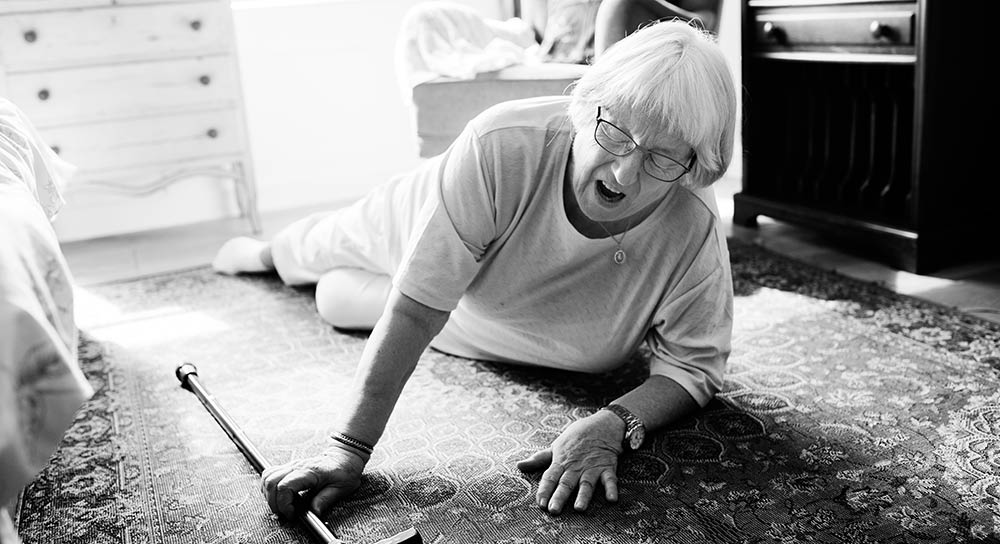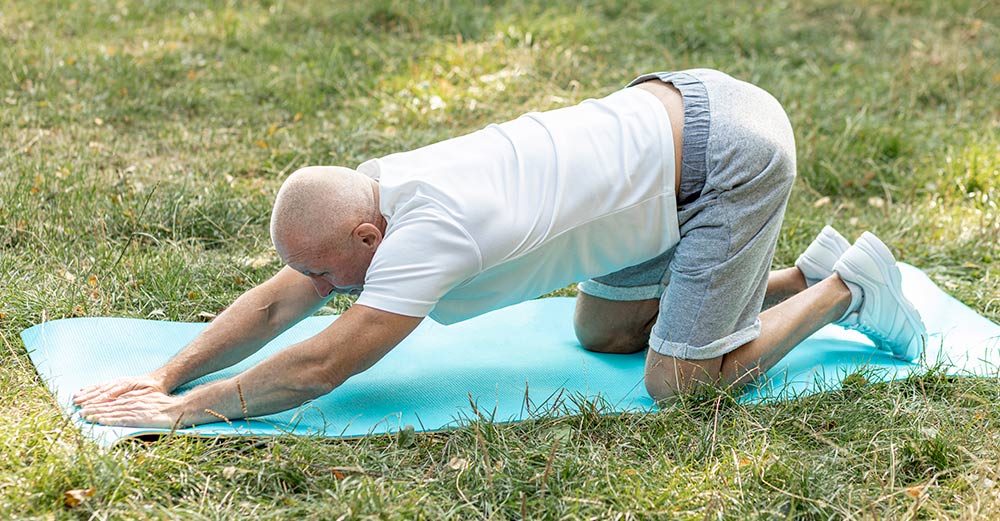Improving Balance and Preventing Falls at Home
As your senior loved one or client moves around at home, the possibility of falling is ever present. According to the Centers for Disease Control, falls are the leading cause of injury among older adults. One in four Americans over 65 are injured each year in accidental falls.

Falling can be caused by challenges with eyesight, certain health conditions, mild cognitive impairment, muscle loss or everyday hazards around the home. With the prospects of falling being a reality, it’s essential that you take every precaution to prevent falls. But you don’t need to attend special classes or go to a specialist to help prevent falls. In this article, we’ll discuss a few ways you can help your senior loved one or client improve their balance while at home.
Improve Strength and Flexibility
When an individual gets older, they tend to have weaker muscles. To help your senior loved one or client avoid falling and improve their balance, intentionally include them in physical activities. Online videos can be a great resource for simple exercises you can do together at home to prevent future falls.

Activities like yoga, tai chi and even taking walks can be useful in improving strength and balance. Yoga in particular can help prevent falls by improving balance, mobility, and stability. It can also improve hand-eye and motor coordination, and connect the upper and lower body, which can help with balance and control. Of course, be sure to use age and health-specific workout options to ensure your senior client or loved one is safe.
Make their Home Safer
Hazards around the home are common causes of falls. To ensure seniors are balanced and less susceptible to falling, we recommend you remove all sources of potential tripping in the home. The National Institute on Aging recommends removing hazards and obstacles room-by room, including:
Floors, stairways, and hallways
- Watch out for hazards such as throw rugs and slippery floors.
- Keep everything in its place, instead of in a pathway through the room.
- Ensure there are handrails on both sides of any stairs, and make sure they are secure. Hold the handrails when you go up or down stairs, even when you are carrying something.
- Install sufficient lighting with light switches at the top and bottom of stairs and on each end of a long hall. Consider using motion-activated lights.
Bathrooms: Clean up any hazards
- Mount grab bars near toilets and on both the inside and outside of your tub and shower.
- Place nonskid mats, strips, or carpet on all surfaces that may get wet.
- Remember to leave a light on in the bathroom at night or install a night light that turns on automatically in the dark.
Bedrooms: Put falls to rest
- Put night lights and light switches close to the bed.
- Keep a flashlight by your bed in case of a power outage.
Kitchen: Turn the heat up on fall prevention
- Keep frequently used pots, pans, and kitchen utensils in a place in an easy-to-reach location.
- Clean up spills immediately to prevent slippery floors.
- Suggest they prepare food while seated to prevent fatigue or loss of balance.
Outdoor spaces: Keep the great outdoors safe
- If you have steps leading to your front door, make sure they are not broken or uneven.
- Add non‐slip material to outdoor stairways.
- Keep the lawn, deck, or porch areas clear of debris, such as fallen branches.
- Consider installing a grab bar near the front door.
- Treat outdoor walkways with an ice melt product or sand to make them less slippery in the winter.
Other living areas: Safety first, last and in between
- Keep electrical cords near walls and away from walking paths.
- Arrange your furniture thoughtfully to keep objects out of common pathways.
- Keep items they use often at waist level or within easy reach.
- Know where your pet is whenever you’re standing or walking to avoid tripping.
- Maintain an easy-to-read list of emergency numbers near each landline or save them to their mobile device.
A little preventive vigilance can stop dangerous falls before they happen.
Be Mindful of Medications
There are some drugs that bring about feelings of dizziness or drowsiness. When caring for a senior, be sure to minimize walking around when they take medications with such side effects Some common culprits include:
- Anti-anxiety drugs, such as diazepam (Valium) and lorazepam (Ativan)
- The antihistamine Diphenhydramine (Benadryl) that causes drowsiness and is often included in over-the-counter sleep aids.
- Prescription medications to treat overactive bladder, such as oxybutynin (Ditropan) and tolterodine (Detrol).
- Tricyclic antidepressants such as amitriptyline (Elavil), often prescribed to help relieve chronic pain, especially nerve pain.
- Prescription sleep drugs, including zolpidem (Ambien), zaleplon (Sonata), and eszopiclone (Lunesta).
- Narcotics (opioids), such as codeine, hydrocodone (Vicodin), oxycodone (Percodan, Percocet), hydromorphone (Dilaudid), and fentanyl (Duragesic).
There are some medications that may cause these effects unknowingly in individuals. Advise your health professional if your medication makes you drowsy, dizzy or unsteady.
Looking for more advice on how to care for your loved one at home? Visit the Resource Center at Mass Care Link for articles, advice and more.
